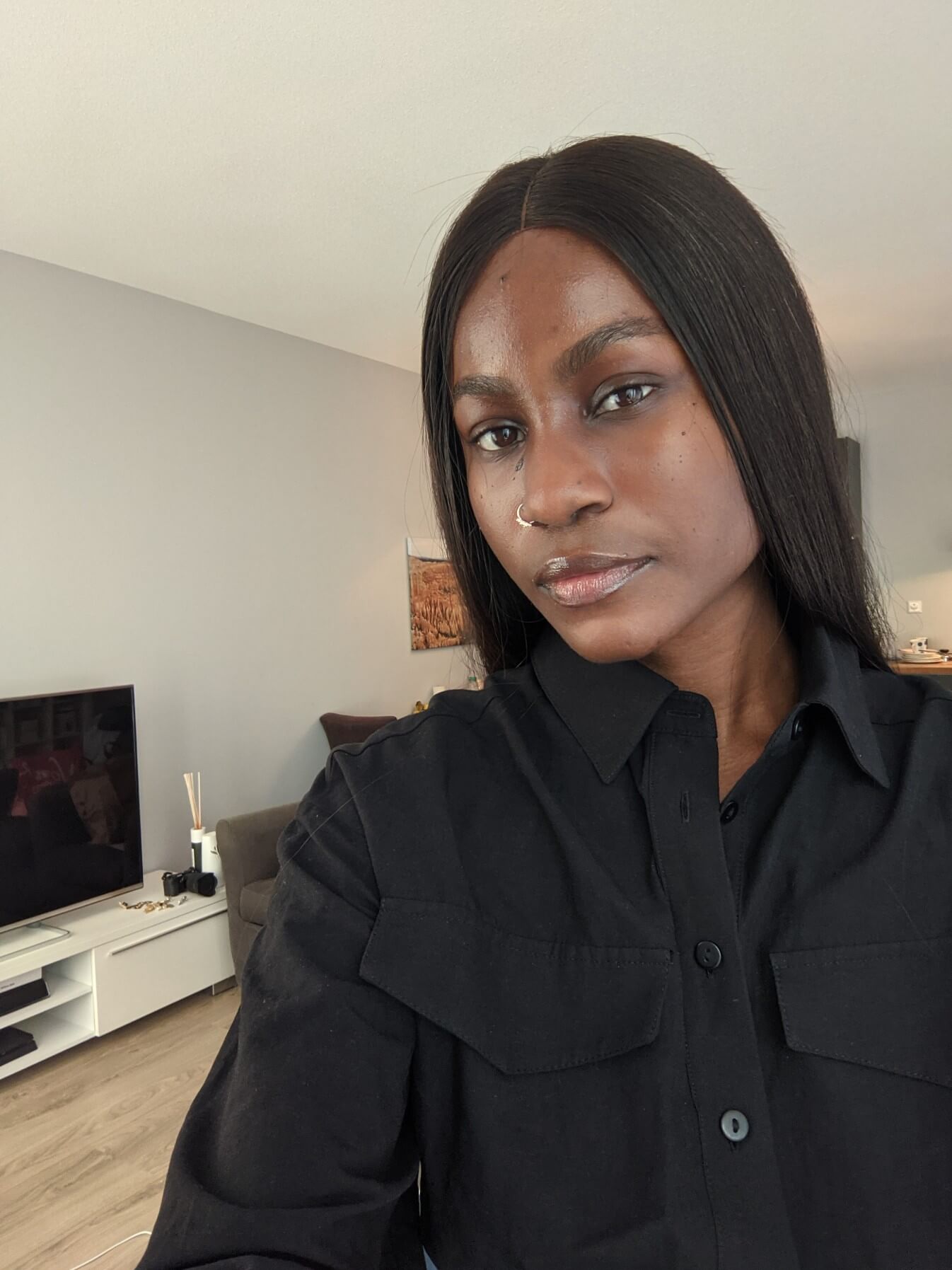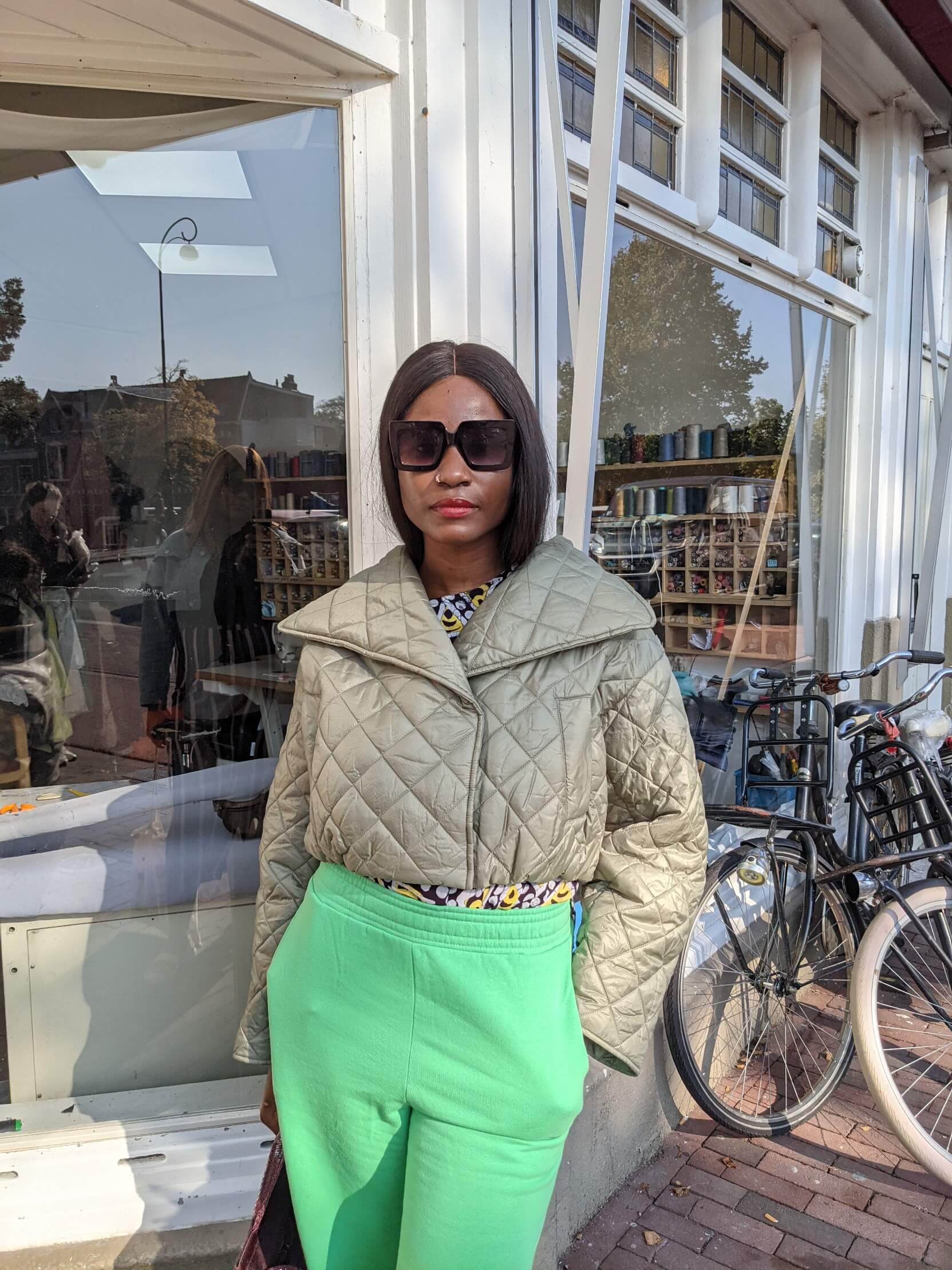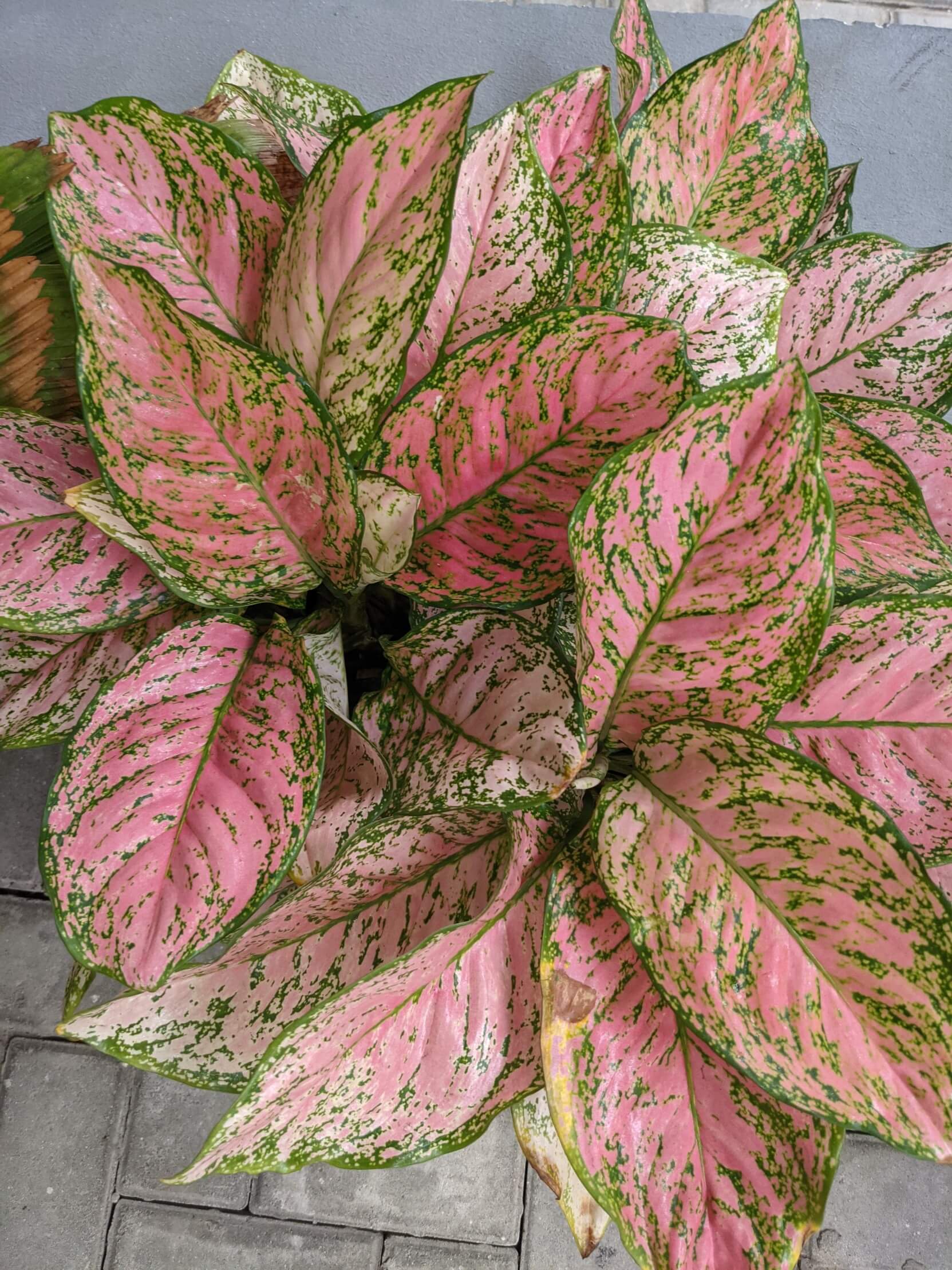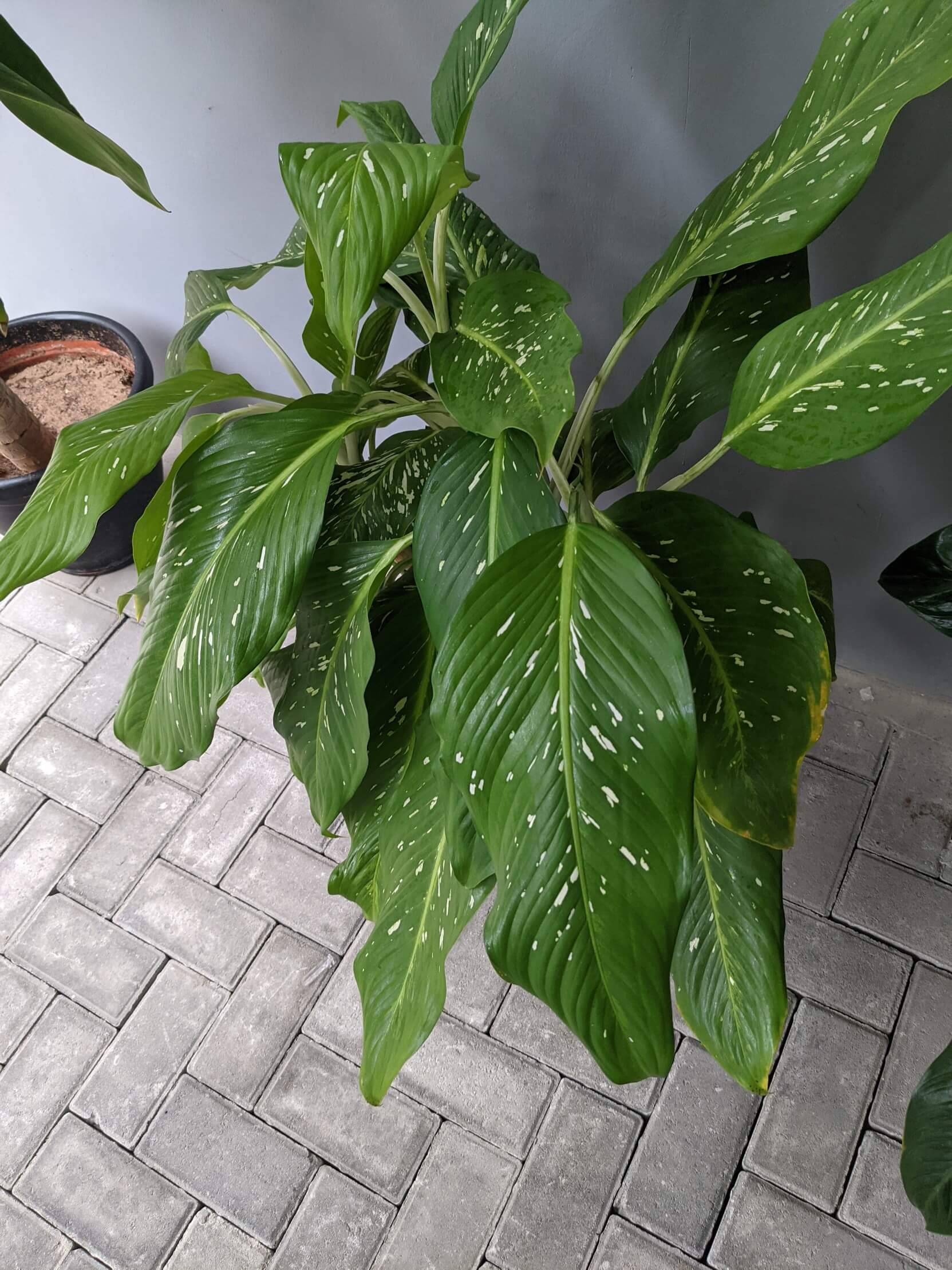Nemi Banigo

Design, Plants, Mortal Kombat
There are three main things that sum me up as a person; Design, Plants and Mortal Kombat. I am a happy plant parent, I used to have about 12 plants before moving to Amsterdam. I am also a Mortal Kombat Champion.
Well, I do like movies; horror movies specifically. I like shopping. I like libraries, even though there are not a lot of them around these days. I like to read; hardback, softback and sometimes, eBooks. I love discovering new things, I love going on walks, partying, going out for drinks, laughing and just having a good time.
Pre Design Life
The funny thing is that I didn’t actively start out wanting to become a designer. My biggest dream initially, was to be a Newscaster. Later on, I wanted to be a PR person because I loved the idea of managing clients, handling accounts, and being in charge of communication. So, after I finished university, I started a short stint as a journalist. And then after that, I made the first pivot into PR. I was a social media manager for a company called Campaign Hub for ₦70,000 ($272) I was handling their accounts, came up with media strategies, and worked closely with tech departments. I think there was this feeling about the tech guys like their work was more important and their needs came first, it really used to annoy me.
Towards the end of 2016, I decided that I wanted more than the job was giving me. It was a fun job, but I wasn’t feeling quite fulfilled. Some of my colleagues had side gigs they were doing, and I wanted something like that. I started to think about what I could do on the side. I had a diary then and I remember writing a list of about five skills I wanted to try my hands at.
At first, I tried going to a makeup school but the fees were so expensive and I couldn’t afford it. Then, I tried my hand at Tailoring but that didn’t work either. I was left with coding and graphic design. I was more drawn to graphic design, it seemed attainable because I knew how to draw and I felt like it would be a good transition.

Social Media to Graphic Design
The thing is, I actually started with graphic design. As a social media manager, I had to make some designs for the pages I handled. I did my designs with Canva initially. Then they installed Photoshop on the work laptop I was using, so I switched to using Photoshop for my designs. I got so good with using Photoshop that my colleagues couldn’t believe that I was actually the one creating the designs on the pages.
Eventually, I moved on to using Sketch and Adobe XD. That is because I got a personal laptop; a Macbook Air, and Photoshop was too heavy for it.
Adding Coding To The Mix
I decided to mix coding with design. The thing is, I had created limitations for myself beforehand. I felt that I needed to be a good mathematician to be good at coding, and I was terrible at math.
I think a defining moment for me at that time was seeing a tweet where someone said something along the lines of ‘if for anything, please learn to code’ So, I decided to give it a try.
Towards the end of 2016, I opened an account on CodeAcademy. I was to go on leave in January, and there was also the Christmas break in December. I spent the holidays taking HTML and CSS classes.
Leaving Campaign Hub
My leave ended in January and I returned to work. I was combining the job with coding and actually enjoying the experience. The downside though was that I was finding it difficult to balance the job and my new interest. Numbers were dropping on the pages I was handling; my supervisors were complaining and I was really getting tired of the job.
I reached out to someone on Twitter who used to work with Andela. I asked if Andela would take really new beginners and he said yes. He urged me to apply and I got into the boot camp. I then quit my job.
So, that’s how I started with Python, JavaScript and I was doing very well. I kept designing, doing those daily UI challenges and coding because I was very keen on knowing how to do both. I wanted to be like the designers at Campaign Hub who could design and code, I felt like they were some sort of high breed designers and I really wanted that. I got a lot of support from family and friends, so I didn’t have to worry about money or expenses or about getting a job immediately. Still, I gave myself six months to learn enough to get a job in tech.
Using Social Media
The first job offer I got was for the position of frontend developer. I reached out to a friend on Twitter about the job and it turned out I was to take over from him. He is a big name in the Nigerian tech industry and I just felt incapable of taking on the job. I turned it down. But I became friends with him, and with a host of other people on Twitter. They were always ready to help me, review my work and point me in the right direction. It was always easy to share my work with them because they were open to helping me be better. And in fact, sharing my design work is one thing that I can say really helped me grow.
First Design Job
I started my first job as a Designer on the 4th of September, 2017. I had spoken to another friend on Twitter who spoke to me about a job opening. I told him that I didn’t think I was a Designer yet and so wasn’t sure I was a good fit for the job. That was when he told me something I can never forget, he said, “The moment you start something, you’re already that thing” So I went for the interview, did some tasks, and was offered the job.
I still had a lot of learning to do. To bridge the gap, I upped my skills by following designers who were doing amazing work; I would read a lot about their case studies and their processes. I also followed design blogs and discovered the digital agency.
Reading and looking at works from other people made me realize that there was a lot I had to learn and that was how I improved my design skills.
On Feedback and Criticism
So, I didn’t really have a feedback problem, for two reasons. The first is because I am a confident person and I can actually take criticism without letting it bother me. The second reason was that I barely had any major feedback when starting out. My job was at a start-up and I was the only Designer there. So, it was more like I was teaching my teammates about design and putting them through.
I also generally had kind people around me who were willing to allow me to explore. They were kind with their feedback, so I didn’t really have a feedback problem.
Biggest Challenge
I would say one of the biggest challenges was getting people to take me seriously. Not me, Nemi but Design. In 2017, there were a lot of misconceptions about what design was and what designers were supposed to do; the notion that if one couldn’t code, they weren’t really good designers, or including other roles into the role of a designer. I remember going for an interview on one occasion and the person added social media as part of my duties as a designer. I turned it down, of course. I think it was incredibly hard especially being the only designer and often the only woman on the team and having to get people to understand that I am a Designer and had specific job descriptions. So, I think that was the biggest thing I had to deal with; having to educate people while also still learning and navigating.
On Community and Mentorship
I didn’t have a community. What I did have was a strong support system, especially my family members. Like my uncle, who would randomly send me money to pay for Wi-Fi. I also had the support of my partner; he was already in the tech industry and was always willing to guide me. It was a good thing to know that I had a home and people to fall back on if Tech did not work out.
Looking Back
One thing I wished I did earlier was to choose & commit to a path. I wouldn’t have stretched myself trying to combine design and coding. I wish I knew that design was a lot more important, a lot more impactful than I made myself believe. Knowing that would have helped define what I wanted.
Knowing how to code incidentally made collaborating with developers difficult. I often gave unsolicited advice 😂 . Looking back, there’s a difference between support and interference with someone’s work and I definitely crossed that line in my early days.
Necessary Skills for Designers
I would say that being a designer requires effective communication, empathy, and all those other soft skills including having an open mind. I think an open mind is a necessary skill every designer should have. Designers have to be more tolerant if they want to go far in the industry. The more tolerant a designer is in their own life, the more inclusive they can be in their design.
Being able to allow one’s thoughts or notions to be challenged is important. For example, they have to be willing to acknowledge people’s pronouns in design, as opposed to just a male, female, Mr or Mrs view of gender.
Designers should also be curious and never tire of reading. I think reading is one of the most underrated things; so, read everything. It doesn’t always have to be design books. What reading does is help one store information, consciously or otherwise, and information always comes handy in one way or another.
Also, be confident. Be able to speak up for your work or what you believe in. As designers, we are still in the minority. The ratio is still about 1 designer to 5 developers, so being able to speak up is important.
Controversial Design Opinion
I believe Designers don’t need to be developers, product managers (or any other extra tech job people have fused to design these days) to be great designers.
Designers do not have to invest in skills that are not core Design simply because they need to be “taken seriously, or need to prove their worth”. They should do those things if they want to/find them interesting.
I would also argue that defining Product Design as anything and everything is how designers find ourselves constantly educating others about what we do or proving to business owners that we are indeed impactful.
Design Inspiration
I like Muzli, Abduzeedo; there’s a lot of work that encompasses design, art, and photography there. I also like Codrops/tympanus.net for web animation and interaction.
Other than these, I can pretty much draw up inspiration from anywhere. Once I see something I like, I’m excited to try it out or put a spin on it to see if it works for me.
Favorite Design Tool + App
I like Invision Studio. I’m big on advanced prototyping and creating interactions, and Studio nailed that aspect.
My favorite App is Uber. I find everything about the product super delightful, intentional, and easy to understand. My favorite thing about Uber is how globalization was taken into account, in the sense that if I’m traveling to different countries, I don’t have to change or update a single thing in the app. It just works!
On Design Thinking
Design thinking for me is about deeply understanding a problem, who we are designing for, and how this problem currently affects them. Once you have a thorough understanding of a problem, it’s easier to outline a clear goal or outcome on how a solution could make their lives better or meet their needs.
Design Prediction
So, I think in three to five years we will have founders that are more conscious and more aware of the importance of design. More companies will have proper design teams and designers will get more high-end jobs.
Advice for New Designers
Focus on actually being good at your craft. I know it feels like the industry is saturated already, but the truth is, there is a space for everyone. So, it is better to spend as much time as one needs learning the craft, than clamoring to enter the industry as soon as possible.
It is absolutely important for designers hoping to improve their craft to find a medium to share their works and receive feedback. Sharing one’s work exposes one to people and opportunities. Of course, it exposes one to a lot of design advice, and one has to carefully sift through design advice that works for them, and what doesn’t.
And I think Daily UI helps. Try it out and if you can, do the daily UI. Trust yourself and allow yourself to go through the learning process. For example, if someone who has been designing for seven years tells you that Daily UI is not a relevant way to practise, you should consider that you are not in the same learning phase as they are, and trust your own process.
There are so many design resources currently, so feel free to explore and try as many designs and tools as possible. I can say that the more explorative work one does, the more exposure one get. So, the beginning is where to explore. And don’t worry, everything will work out in the end.
Continue Reading
Elijah Kingson
Elijah is a London-based Product Designer who enjoys turning broad ideas into lovable products and experiences.
Read Origin Story ➝
